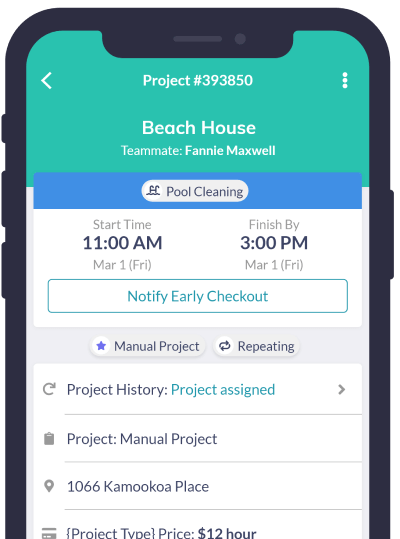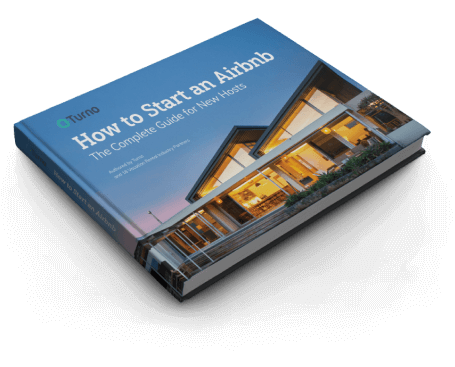1. Research Your Competition
“It’s important to set a solid pricing strategy. First, we recommend that you check out the market prices. Impersonate someone looking to go on vacation in the town your rental property is located in. What do the options look like? If you ranked those from worst to best, where does your property fall? Be honest with yourself and price out a stay at your property from there.”
Take a look at a few vacation rental listings that are as similar to yours as possible — the same number of bedrooms and bathrooms and a similar location is the bare minimum.
Take a look at their calendars and ask yourself:
- How often are they booked?
- When are they the busiest, and what do their prices look like during those times?
- What are their prices like during slower seasons? Mid-week?
Are competitors’ rates especially high during an annual festival? How do they change over the course of a week? What about during the winter holidays, or over spring break? Jot down some numbers and calculate an average to establish a basis for comparison.
2. Don’t Go Overboard With Fees
One of the hardest parts of pricing a vacation rental is the fees. Just like overly high prices, overly high fees can turn guests off to booking.
You may find yourself with questions like: Should cleaning fees be an add-on or included in the nightly rate? What about pet fees or late check-in fees?
Two common ways to handle fees are bundling (combining all of your fees into a single fee) or splitting the cost of fees between you and your guests.

3. Establish Pricing for Times of High Demand
Pricing your rentals for times of high demand is both exciting and delicate. You have to strike a good balance between staying competitive and not overcharging while still taking advantage of the surge of demand.
What Does High Demand Look Like?
Every market has its own ebbs and flows of demand, called market sensitivities. Some of the most common ones include:
- Seasonality: The various seasons of the year will impact demand in different ways. For example, September through November may be considered shoulder season in Hawaii, where the rains tend to increase. But in Vermont, property managers will be experiencing a peak thanks to popular events like leaf-peeping.
- Days of the week: Some properties do better on certain days of the week. Urban markets may experience a high mid-week due to business travel, whereas a ski cabin in the mountains may be more likely to sell out on the weekends.
- Major events: Marathons, film festivals, and other popular events are always a good time to increase bookings.
- Holidays: While the holidays are generally busy for all rental markets, hosts who offer larger properties may see an uptick in interest as families travel to be together.
The type of rental and the amenities provided can also impact high demand. For example, homes with pools will be more popular when a heatwave is in the forecast, while condos with private hot tubs may sell better around Valentine’s Day.
Increase Your Rates Based On Data
To increase your vacation rental rates strategically during times of high demand, it helps to lean into some data, both authoritative data from your own project management system (PMS) as well as local market data.
- Average Daily Rate: This data point can act as a base expectation for past busy seasons, and you can make adjustments to optimize your return on those specific days based on past performance.
- Comp Sets: Comparing your properties to others in the market can help you see what your competition is up to and make adjustments accordingly.
4. Adjust Pricing During Slower Seasons
Like everything else in the travel industry, vacation rental pricing is largely dependent on when people try to book and why. Your beachfront properties will have different rates than townhomes in Aspen, which will have different rates than condos in Vegas or New York.
Changing your rates to match slower seasons means that you’re always getting your money’s worth and reducing vacancies. Don’t forget: You’ll make more by booking your property at a lower rate than if you don’t book at all.
5. Analyze Data to Make Evidence-Based Decisions
“To successfully run an Airbnb business, you’ll want to keep track of a couple of key data points.
First, you’ll want to know when guests are booking and when they’re staying on your property. This can offer you insight into what times of year are most lucrative for your business, as well as which times might be a little leaner. Additionally, knowing how far in advance guests are booking may help you to understand times to target ad campaigns or other marketing devices to make sure your rooms are never empty.
You’ll also want to know where your money is going. What are you earning from your properties? Where are there opportunities to earn additional income? Best of all, when is that money showing up in your bank account? Again, this data will provide opportunities to hone your strategy to increase your profits over time.”
– Futurestay
Price Your Vacation Rental Right
You have invested a lot of time and money into starting your own vacation rental business. The last thing you want to do is price your vacation rental too low and miss out on revenue. Creating a pricing strategy that best suits you and your property is the best way to maximize potential profits.
Strategically pricing your vacation rental can be done by considering your competitive market, how the seasons affect demand within the Airbnb industry, and how recurring fees affect your overall business.







